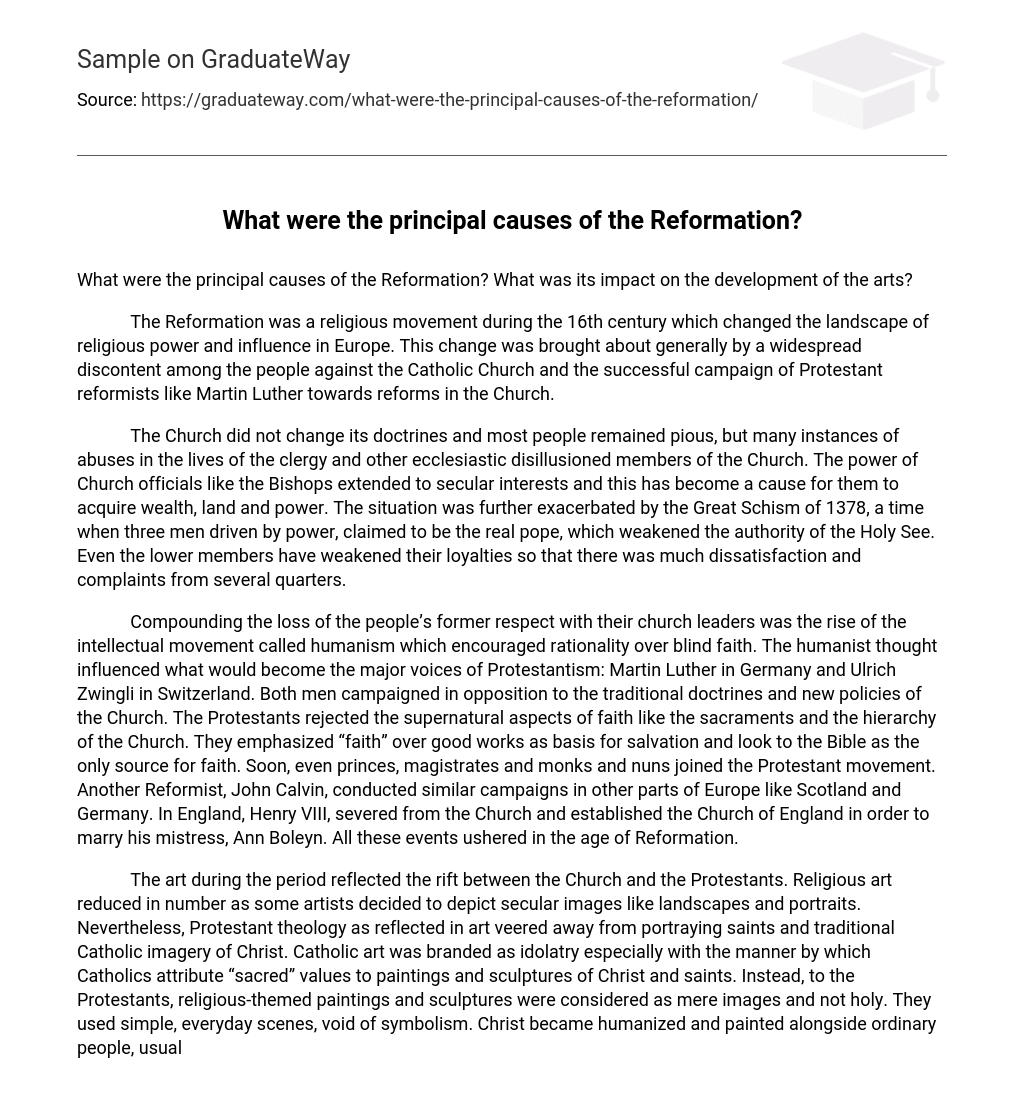The Reformation was a religious movement during the 16th century which changed the landscape of religious power and influence in Europe. This change was brought about generally by a widespread discontent among the people against the Catholic Church and the successful campaign of Protestant reformists like Martin Luther towards reforms in the Church.
The Church did not change its doctrines and most people remained pious, but many instances of abuses in the lives of the clergy and other ecclesiastic disillusioned members of the Church. The power of Church officials like the Bishops extended to secular interests and this has become a cause for them to acquire wealth, land and power. The situation was further exacerbated by the Great Schism of 1378, a time when three men driven by power, claimed to be the real pope, which weakened the authority of the Holy See. Even the lower members have weakened their loyalties so that there was much dissatisfaction and complaints from several quarters.
Compounding the loss of the people’s former respect with their church leaders was the rise of the intellectual movement called humanism which encouraged rationality over blind faith. The humanist thought influenced what would become the major voices of Protestantism: Martin Luther in Germany and Ulrich Zwingli in Switzerland. Both men campaigned in opposition to the traditional doctrines and new policies of the Church. The Protestants rejected the supernatural aspects of faith like the sacraments and the hierarchy of the Church. They emphasized “faith” over good works as basis for salvation and look to the Bible as the only source for faith. Soon, even princes, magistrates and monks and nuns joined the Protestant movement. Another Reformist, John Calvin, conducted similar campaigns in other parts of Europe like Scotland and Germany. In England, Henry VIII, severed from the Church and established the Church of England in order to marry his mistress, Ann Boleyn. All these events ushered in the age of Reformation.
The art during the period reflected the rift between the Church and the Protestants. Religious art reduced in number as some artists decided to depict secular images like landscapes and portraits. Nevertheless, Protestant theology as reflected in art veered away from portraying saints and traditional Catholic imagery of Christ. Catholic art was branded as idolatry especially with the manner by which Catholics attribute “sacred” values to paintings and sculptures of Christ and saints. Instead, to the Protestants, religious-themed paintings and sculptures were considered as mere images and not holy. They used simple, everyday scenes, void of symbolism. Christ became humanized and painted alongside ordinary people, usually including the likeness of the leaders of the Reformist movement. The Protestant Reformation also mass produced religious images, bringing religion into the homes of the average person, and thus encouraging them to join the new brand of faith.
Meanwhile, the Church began its own Counter-Reformation art. During the Council of Trent from 1545-1563, the Church instituted reforms to the institution including the regulation of art, forcing Catholic painters to produce only the traditional religious art. Christ, the Virgin, and the Saints were idealized in the classical vein of painting.
These two kinds of differing styles, therefore, characterized art during the Reformation.





